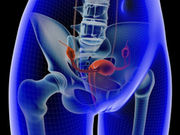Robotic is more costly, but results in shorter length of stay and greater rate of lymph node dissection
WEDNESDAY, Nov. 18, 2015 (HealthDay News) — For women with uterine cancer, robotic surgery is more costly but is associated with decreased length of hospital stay and higher rate of lymph node dissection, according to a study published in the November issue of the American Journal of Obstetrics & Gynecology.
Andrew Zakhari, M.D., from McGill University in Montreal, and colleagues compared costs and complications among women undergoing robotic and laparoscopic hysterectomy for uterine cancer using data from the Nationwide Inpatient Sample database from 2008 to 2012. A total of 10,347 women were identified who underwent laparoscopic (39 percent) or robotic (61 percent) hysterectomies.
The researchers found that more comorbid conditions were identified in women undergoing robotic surgery. Compared with those undergoing laparoscopic surgery, women undergoing robotic surgery were more likely to have a lymph node dissection (73.01 versus 66.04 percent; P < 0.0001) and an admission lasting less than three days (86.01 versus 82.5 percent; P < 0.0001), in adjusted analyses. The cohorts had similar rates of the composite end point of any complication (20.56 percent for robotic versus 21.00 percent for laparoscopy). Robotic surgery was more costly in overall and subset analyses (median charges, $38,161 versus $31,476; P < 0.0001).
“Despite the considerably greater burden of comorbidities in those undergoing robotic surgery compared with laparoscopy, the former have shorter hospital admissions, a greater rate of lymph node dissection, and similar postoperative morbidity and mortality, albeit at greater total cost,” the authors write.
Copyright © 2015 HealthDay. All rights reserved.








